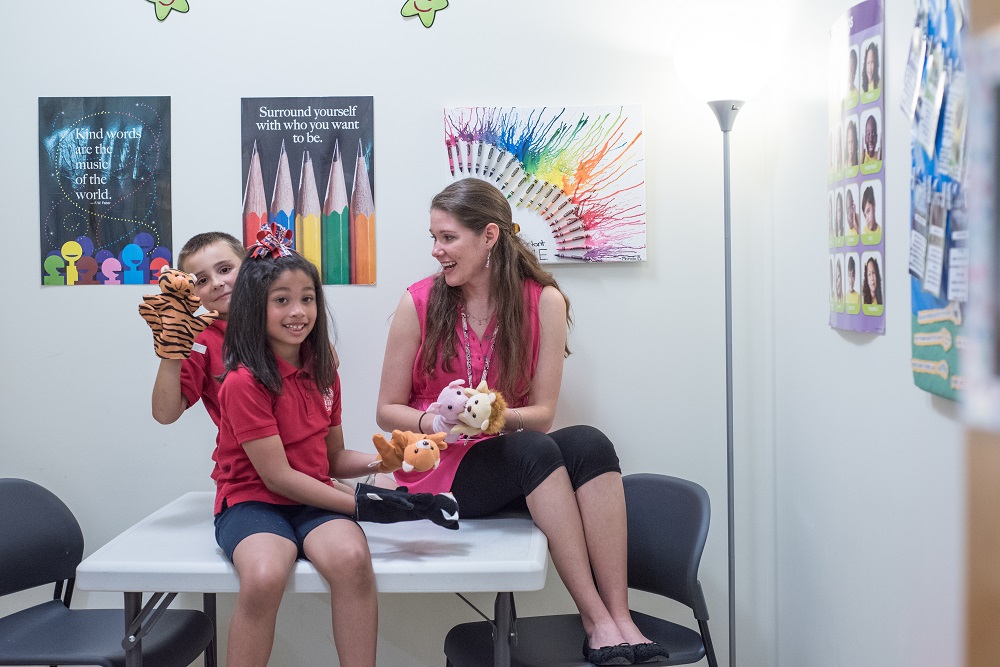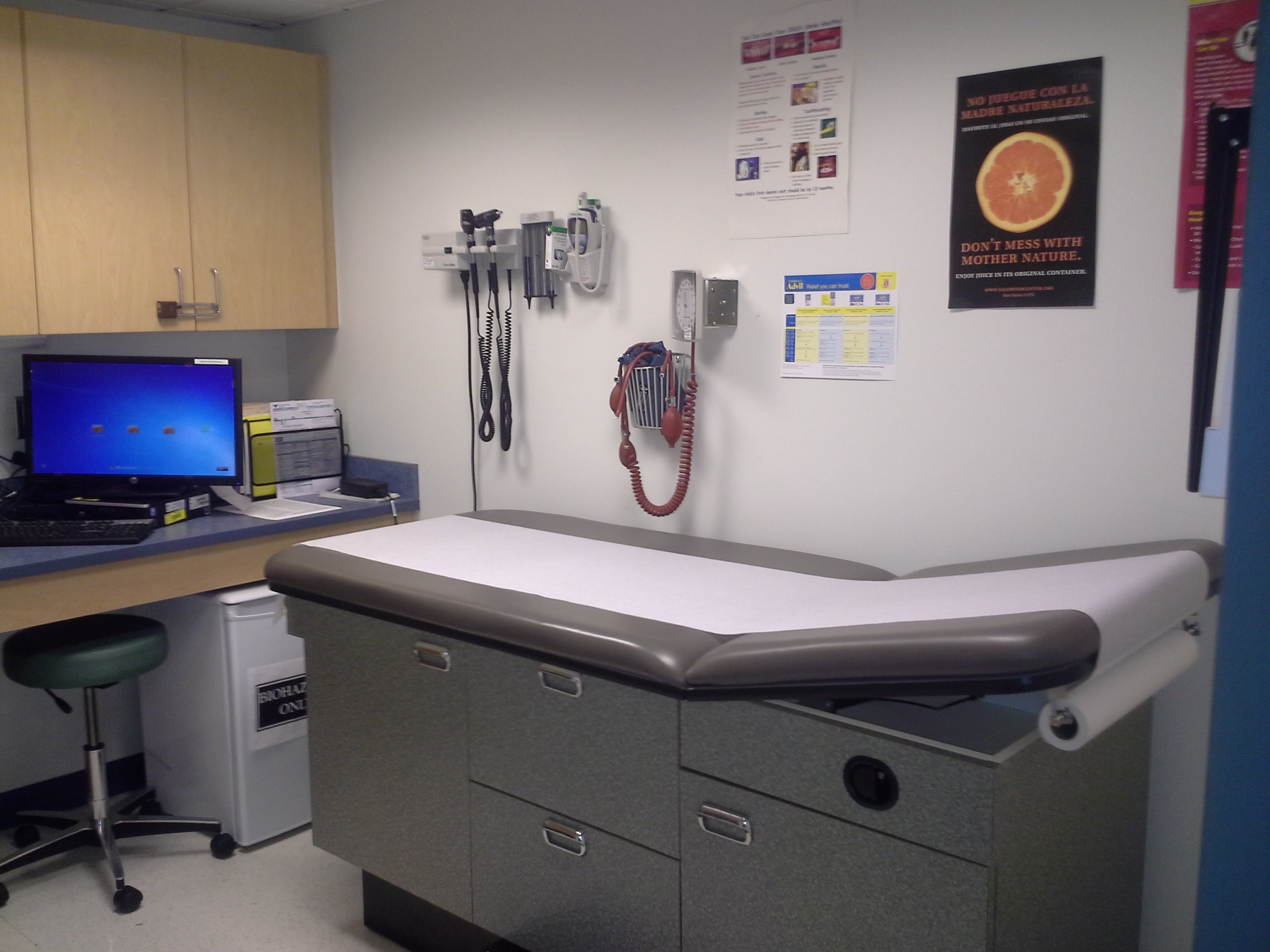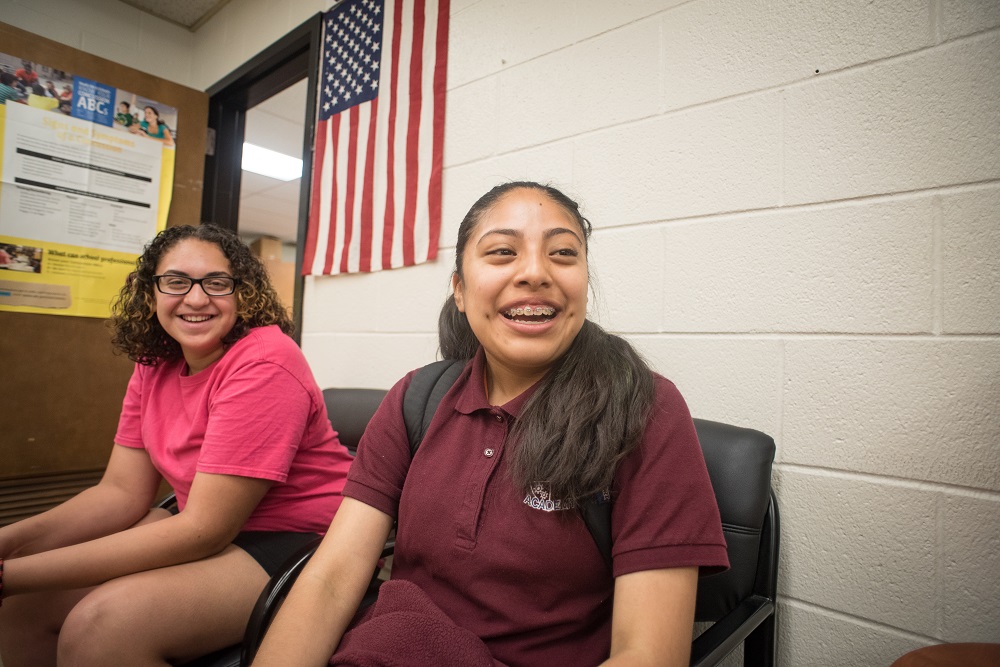Today’s blog is written by Jesse White-Fresé, the executive director of the CT Association of School Based Health Centers.
For over 30 years, Connecticut’s school-based health centers (SBHCs) have been delivering comprehensive health care to students in the place where they spend 25 percent of their waking hours – school. Today, there are more than 100 school-based health centers in the state. The centers have become part of the safety net for children and teens, providing physical, mental, and oral health services to over 44,000 students every year in more than 30 communities.
Never heard of a school-based health center? Here are five things you should know.
1. School based health centers are not the same as the school nurse’s office.
School-based health centers complement the work of school nurses by providing services for students in need of more complex care — such as treatment for illnesses and injuries, and behavioral or dental health care. Each school-based health center is a fully licensed primary care facility, staffed by teams of professionals specializing in child and adolescent health, including nurse practitioners or physician’s assistants, clinical social workers, medical assistants, and oral health professionals, operating under the guidance of a medical director. They offer services including therapy, support groups for issues such as anger management and substance abuse, diagnosis and treatment of minor illnesses and injuries, management of chronic conditions such as diabetes and asthma, and dental services.
Fast fact: On average, students use their school-based health center 2.7 times each year for medical care. Students receiving mental health services visit an average of 12.1 times in a school year, according to CT Department of Public Health 2014-15 data.
2. Health care plays a big role in schools.
Being a kid can be stressful. Many children and teens deal with stressors including poverty, bullying, discrimination, anxiety, family financial stress, social media pressures, trauma, and unsafe neighborhoods. These stressors can lead to health issues that impact students’ school performance. SBHC staff help students learn resilience and coping skills and allow them to develop relationships with trusted adults.
Fast fact: 45% of the school-based health center visits in Connecticut each year are for mental health services, according to CT Department of Public Health 2014-15 data.

School-based health center, Windham CT. Counselor with two elementary students working on conflict resolution using puppets.
3. Having health care services in schools keeps students in class.
With a health center located in their school, students can get the medical care, mental health therapy, and dental care they need without leaving school and missing valuable class time. Studies have also shown that adolescents who use SBHCs for medical care have significantly increased attendance compared to students who don’t use them. In addition, students who used SBHCs for mental health services had increased grade point averages compared to those who didn’t.[1]
Fast fact: More than 90 percent of students who use SBHCs returned to class immediately after their appointment.
4. School-based health centers support parents too.
Since children and most teens can’t get around by themselves, being able to get health care in schools also makes a big difference for their parents. One parent whose son goes to his school’s SBHC said, “If it were not for this center, I would have to pick him up and go to the emergency room each time, and without transportation. My son can attend more school because there is available care.”
5. School-based health centers provide care to students regardless of insurance status or ability to pay.
Many SBHCs partially rely on grant funding to help support their operations, particularly since they aren’t always paid for the care they deliver. Just as a doctor’s office would, SBHCs also support themselves by billing students’ insurance, they don’t turn away anyone who can’t afford to pay. Parents must give permission for their children to receive care from the health centers, but once they do, payment isn’t a barrier.
It is the mission of school-based health centers to work in partnership with parents, respecting the age, cultural values, and family situation of every student. A survey of 1,005 Connecticut students in grades 6 – 12 who use their SBHC show the value that these centers have on their lives.[2]
- 75% agreed with the statement, “I have learned how to better manage my health issues/problems since coming to the SBHC.”
- 70% agreed with the statement, “I have learned some new health habits through my visits to the SBHC.”
- 65% agreed with the statement, “I have learned that some of the things I do may cause my health problems.”
Every child deserves a healthy future – and school-based health centers can help them get there.
[1] Impact of School-Based Health Center Use on Academic Outcomes. Walker, Sarah Cusworth et al. Journal of Adolescent Health, Volume 46, Issue 3 , 251 – 257. http://www.jahonline.org/article/S1054-139X(09)00264-X/fulltext.
[2] CT Association of School Based Health Centers Survey, 2012.

